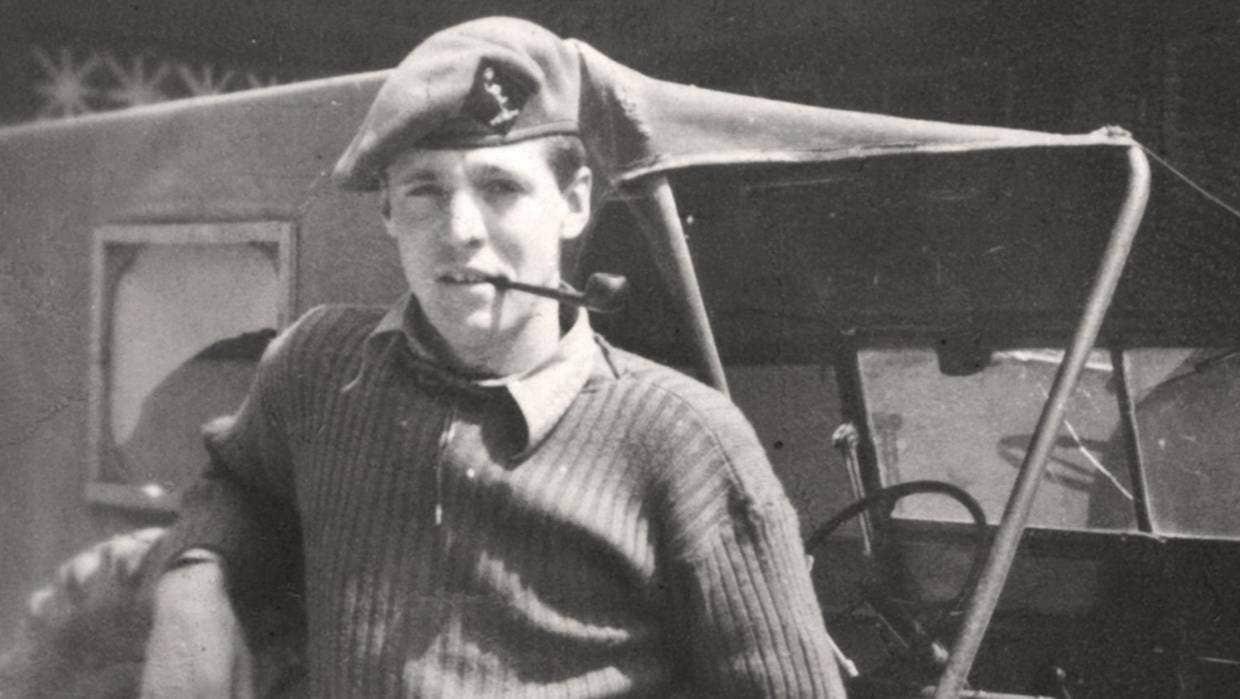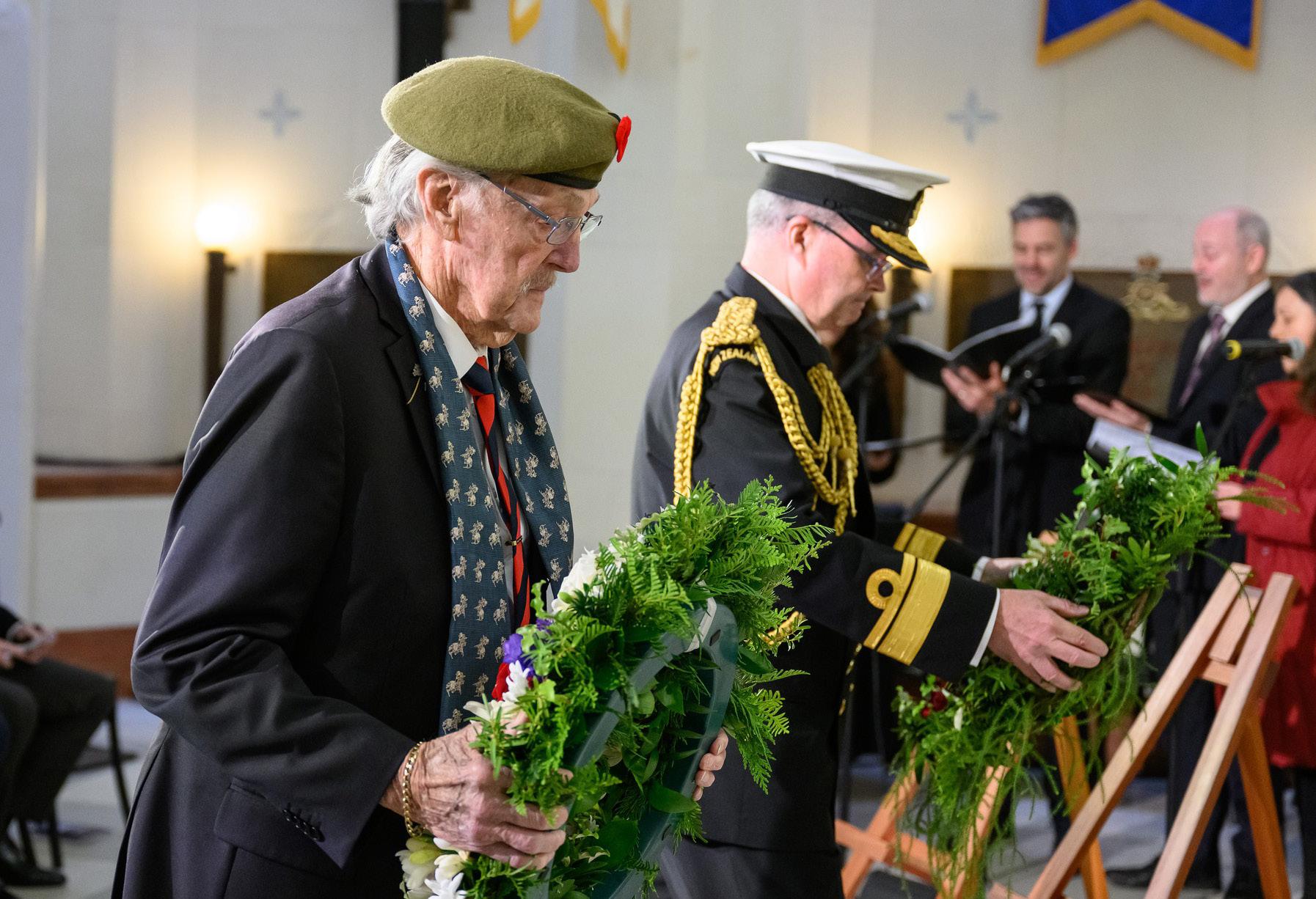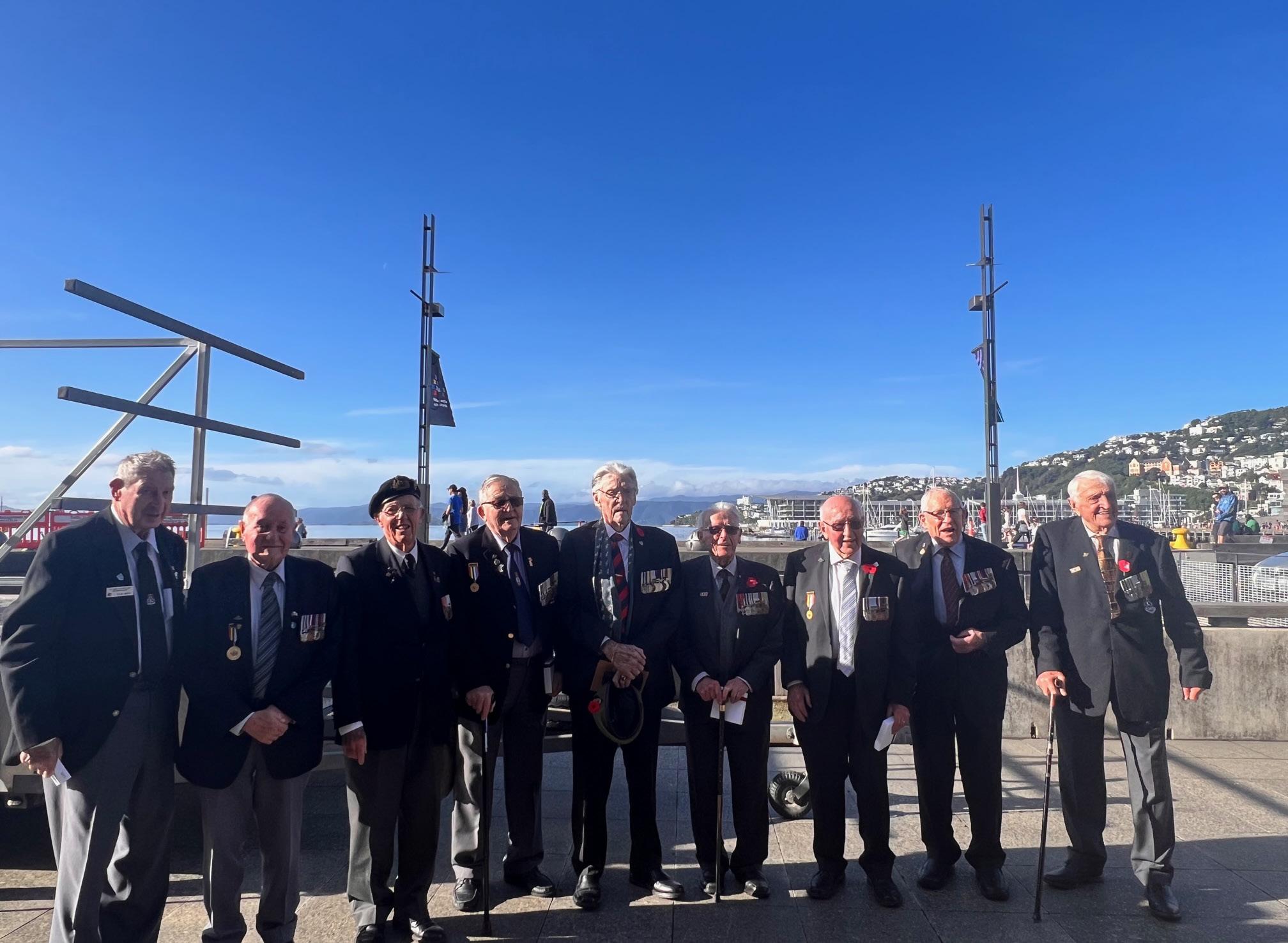
5 minute read
Korean Armistice 1953 70th Anniversary
Desmond (Des) Vinten served in Korea from June 1951 to July 1953.
He lied about his age, and enlisted at nineteen. He signed-up with friends to chase adventure, and on-board the ship from Wellington, Des and his friends toasted their luck at being sent to help the United Nations in Korea.
Thirty miles off the coast of the Korean Peninsula he could smell the Korean city of Busan. “The smell was the first thing we noticed. An acrid stench, the putrid air of a city under siege,” says Des.
He was deployed as a dispatch rider.
“I had trained as a signaller in New Zealand and to start with I was in Seoul. There was plenty of action going on, and it was still pretty hectic for the people in the front line.”
After three months he was posted to the divisional headquarters just south of Imjin River. He drove a jeep on what were mainly dirt tracks to deliver his dispatches.
Once while waiting in his Jeep at the Division airfield for an I Corps courier, a shot-up American jet came in, landed, but overshot the field and crashed into jeep at the far end of the airstrip. Des ran to assist, but the pilot waved him back moments before the aircraft exploded.
4,700 New Zealanders served as part of the New Zealand contingent – Kayforce – under UN command.
The Korean climate is one of extremes. Very hot in summer and very cold in winter. Des remembers clearly those minus 24 degrees celsius winter nights and trying to keep warm inside his canvas tent. It left Des thinking that “War is hell, but winter is even worse.”
On Anzac Day 1952, after a few beers, Des and a Kiwi soldier who had enlisted in the Australian Army, were having some impromptu target practice across ‘no man’s land’ from an OP on 3RAR’s front, when they were found and subsequently disciplined. He was charged with ‘firing on the enemy without permission.’ Sometimes, shooting in the direction of the enemy, created more danger because the Chinese were very accurate with mortars fired in retaliation!
Des left Korea the day the truce was signed and went on to have a long career as a signaller in the New Zealand Army, retiring as a Warrant Officer Class One in 1976.
1,300 served on Royal New Zealand Navy frigates during the war and for a period after the armistice (1953–1957).
He had no intention of ever returning to Korea and thought that the war had been so intense that South Korea could never recover, but during his time as the National President of the New Zealand Korean Veterans
Association, he has visited Korea four times since his service in the Korean War.
“Walking back into that place it was unrecognisable, I wouldn’t have said we were in Seoul. I mean, now it’s a super-city – everyone is so much better off thanks to the United Nations, and the South Koreans have never forgotten that."
45 men lost their lives serving in New Zealand forces, 33 of them during the war.
The current relations between North and South Korea are as strained as ever, but those who fought in Korea say that New Zealand’s involvement was worth it, and are proud to have helped South Korea become the modern, developed country that it is today.
“Everyone gave a lot for what I consider a small but significant gain for South Korea. Had it not been for what we did, it would have been a completely different story.”
Years later, the gratitude of South Koreans, both here, and on subsequent re-visits is still overwhelming.
On Sunday 25 June at Pukeahu, National War Memorial, those who served Aotearoa New Zealand during the Korean War were honoured. 25 June marks 73 years since the Korean War began, and 2023 also marks 70 years since the signing of the armistice between North Korea and the

United Nations Command, calling for a ceasefire between North and South Korea. To this day, no peace agreement has been signed and armistice arrangements continue to be in force.
Around 6,000 New Zealanders served in Korea between 1950 and 1957 of those 4,700 were members of the army’s Kayforce and 1,300 served on the six Royal New Zealand Navy frigates which were active around the Korean peninsula. Forty-five New Zealand servicemen, including two naval personnel, died in Korea and two others died while serving with Australian forces.











